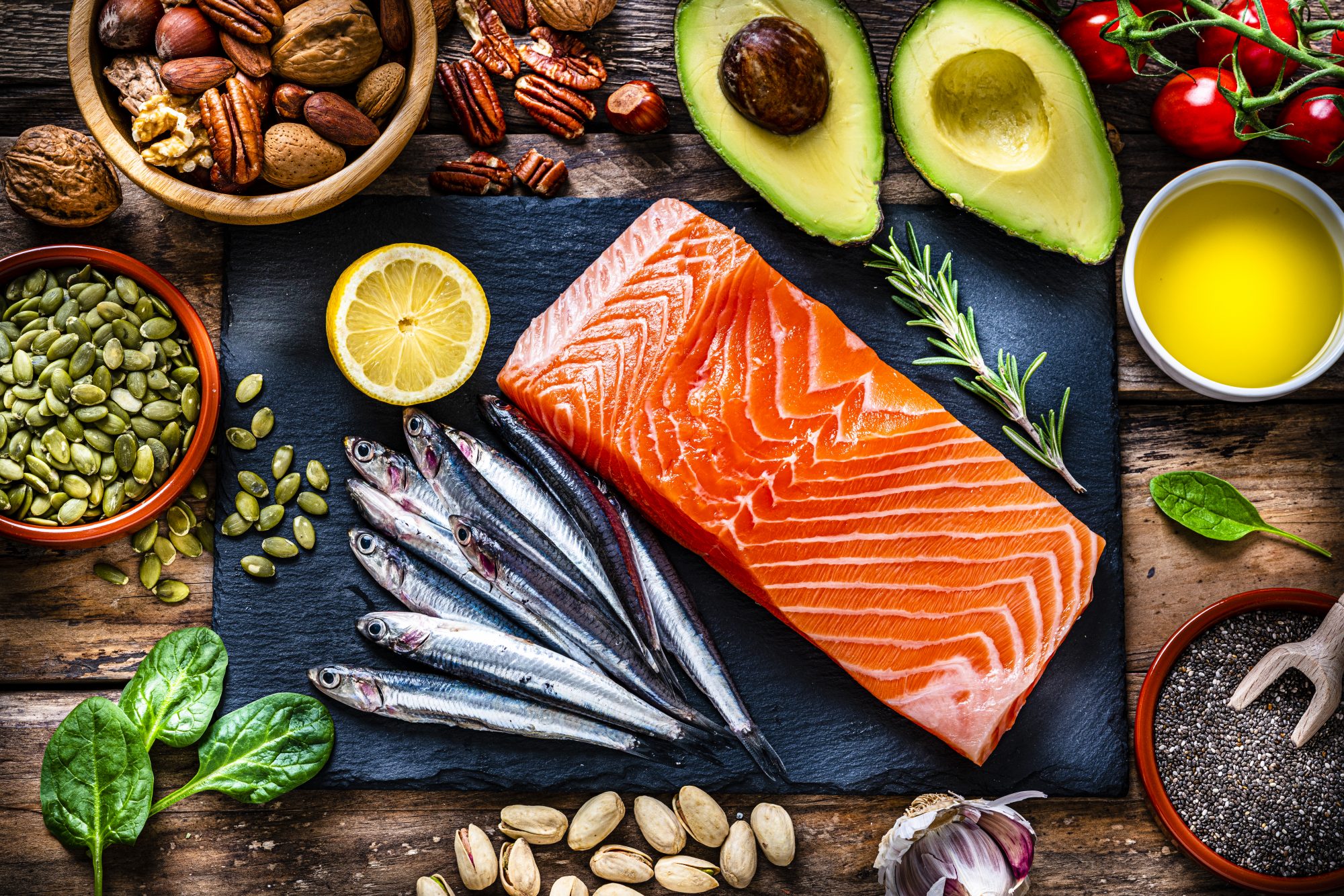This is the third post of an seven-part series about the nutrients our body needs to survive and the foods we get those nutrients from. Today the focus is on fat.
The most common misconception about fat is that it is bad for you, or that if you eat fat you will get fat. Both are not true. Fat is an essential nutrient that we need to eat for our body to function properly. There are different types of fats, and some are healthier than others, so it is important to pay attention to the kind of fat and amount of fat you are consuming.
Fat is a topic that can be a bit confusing to people. Eat this kind, but not that one, and only so much of this kind, and what food was that in again? Hopefully I can help clear some of that up today! This a basic overview of fats.
Types of fats
Saturated fats: these types of fats are solid at room temperature, things like butter, coconut oil and animal fat. They are called saturated fat because, at the molecular level, the carbons are saturated with hydrogens. A type of saturated fat that is important to know about is trans fat. Trans fat is a man-made fat. It is used in packaged products to extend the shelf life of the food. To make trans fat they take an unsaturated fat and force hydrogens on it to make it a saturated fat. A byproduct of this reaction is trans fat.
Unsaturated fat: these types of fats are liquid at room temperature, examples are oils. They are called unsaturated because at least one of the carbons in chain does not have a hydrogen on it. Within the unsaturated fat category, there are two kinds of fat to make note of, omega-3 and omega-6 fatty acids. These two fats are essential fatty acids. Essential means the body needs it, but it cannot make it, so it must be eaten in the diet.
Role of fats in the body
- Fats provide us with the most dense source of energy. Fat has 9 calories/gram, which is more than double the 4 calories/gram found in carbohydrates and protein.
- Fat can be stored in the body in large quantities and used for energy later.
- Fat is a main structural component of cell membranes, or the outside of a cell. The fat layer helps keep the stuff on inside of the cell inside, and the stuff on the outside of the cell outside.
- Fat is a carrier of the fat soluble vitamins in the body-vitamins A, D, E and K and helps the body absorb them.
- Essential fatty acids are involved in many physiological processes such as blood clotting, wound healing and inflammation.
- Fats play a role in hormone production.
Food sources of fat
Saturated fats are found mostly in animal products-meat, eggs, dairy. Unsaturated fats mostly come from oils and plant foods like avocados, nuts and seeds. Omega-3 fats are highest in fatty fish like salmon, mackerel and tuna, but can also be found in flax seeds, walnuts and canola oil. Omega-6 fats are found in many places, like nuts, seeds, and oils. Trans fat is primarily found in processed, packaged food. You can see if a food has trans fat in it by looking at the ingredients-if it says hydrogenated or partially hydrogenated in the ingredients list, then that product contains trans fat. Trans fat is also found in foods that have been deep fried.
How much, and what, to eat
The recommendation for fat intake is 20-35% of your total calories. That comes out to about 44-77 grams of fat per day for a standard 2,000 calorie diet. However, where your fat comes from matters; the different types of fats have different effects on our health, mainly our heart health. The recommended intake of the different types of fat are below.
Unsaturated fats are where we want to get most of our fat from, there is no limit to the amount of this type of fat to eat, so stock up on those avocados, nuts, and seeds!
Omega-3 fats don’t have a recommended intake amount, but needs can met by eating fatty fish 2-3 times per week. If you don’t like fish, you can get some from plant-based foods, but is hard to get enough solely from these sources. You can get your omega-3’s by taking omega-3 supplements. If you go this route, aim for about 1,000 mg of fish oil/day.
Omega-6 fats are needed in small amounts and are found in a variety of foods. If you are eating a varied diet, you are likely getting enough omega-6 fats. It is the balance between omega-6 and omega-3 that is important, so make sure you are getting your omega-3’s a well!
Saturated fats should be limited to less than 10% of our calories, or about 20g/day.
Trans fat are the worst type of fat for us, ideally these should never be eaten. This is the only thing I ever tell people they should never eat! It has the most negative effect on our heart health.
Again, this is a very basic overview of fat. I could spend a whole blog post on each type of fat and how it effects your body, but hopefully this helped clear up questions! Tune in next time for a spotlight on protein.
Stay healthy!
Lisa Robinson-Mihiar, RDN, LD
ClubWorx Dietitian
Have a question you want Lisa to answer on the blog? Send your questions and ideas to Lisa at lrobinson (at) clubworx.net


